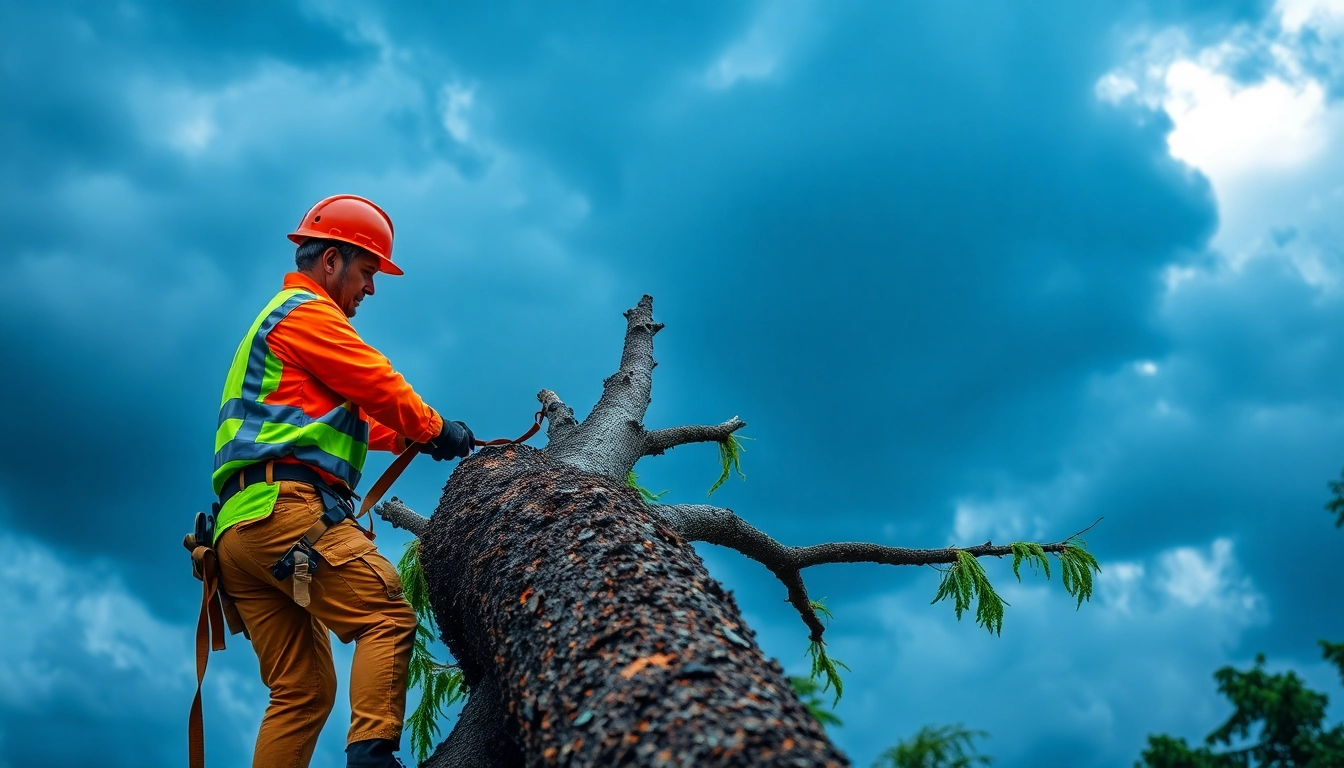Understanding Emergency Tree Service
When unforeseen circumstances strike, such as severe storms, falling branches, or the unexpected decline of a tree’s health, homeowners often find themselves in need of immediate assistance. In these critical moments, having access to a skilled emergency tree service becomes essential. But what precisely is classified as an emergency in the realm of tree care, and when should you reach out for professional aid? Understanding the intricacies of emergency tree services can help you make informed decisions when urgent situations arise.
What Constitutes an Emergency?
An emergency tree situation typically involves any condition that presents an imminent danger to people, property, or the surrounding environment. This could include:
- Fallen trees or large branches obstructing roads or driveways
- Trees leaning precariously towards structures
- Branches that have broken but remain hanging
- Infectious diseases affecting tree health that could spread to nearby vegetation
- Storm damage resulting in unstable tree conditions
In essence, if a tree poses a threat to safety or property, it constitutes an emergency that requires prompt intervention.
Common Situations Requiring Immediate Care
Several situations commonly necessitate emergency tree services. These include:
- Severe Weather Events: Thunderstorms, hurricanes, and heavy snowfall can result in downed trees.
- Tree Decay or Disease: Trees that are infested by pests or suffering from diseases can become structurally unsound.
- Root Damage: Changes in soil, flooding, or construction can affect a tree’s stability.
- Damage to Utility Lines: Trees interfering with power lines can create hazardous situations, requiring immediate attention.
Recognizing these scenarios can help homeowners act quickly and safeguard their properties.
Why Prompt Action is Essential
Taking swift action in an emergency tree situation can prevent further damage, reduce injury risks, and minimize liability. Delaying intervention could lead to larger issues, including:
- Increased repair costs due to additional property damage
- Higher risks of injury to homeowners or passersby
- Longer recovery times post-damage from fallen trees
- Potential legal liabilities resulting from negligence in addressing hazards
A prompt reaction is critical to ensuring safety and reducing overall liabilities, making emergency tree services an invaluable resource.
Top Reasons to Choose Professional Services
When faced with an emergency, many may consider attempting to manage the situation themselves, but there are significant benefits to relying on professional services.
Expertise in Hazardous Tree Removal
Professional arborists possess the knowledge and experience necessary to assess dangerous situations accurately. They are trained to identify how trees should be removed while minimizing the risk of falling debris and ensuring the safety of surrounding properties. Their expertise includes:
- Understanding tree biology and assessing stability
- Knowledge of local regulations regarding tree removal
- Evaluating the best removal techniques for various tree sizes and locations
This expertise can make all the difference in addressing emergencies effectively.
Safety Protocols in Emergency Tree Service
Emergency tree service professionals follow strict safety protocols to protect themselves and the public. Key safety measures include:
- Utilizing protective gear such as helmets, gloves, and harnesses
- Implementing secure rigging techniques to control falling branches
- Using specialized equipment designed for tree removal and trimming
- Adhering to industry safety standards and regulations
By employing trained professionals, you ensure that safety is prioritized during potentially dangerous operations.
Equipment and Techniques Used
Professional tree services utilize a wide range of specialized equipment, including:
- Chainsaws for efficient cutting
- Wood chippers to dispose of debris
- Stump grinders for near-ground level removal
- Elevated work platforms and cranes for large tree removals
The use of appropriate tools and techniques not only makes the job easier and faster but also enhances safety during hazardous removals. This level of professionalism showcases why hiring experts is a prudent choice during an emergency.
Cost Factors for Emergency Tree Removal
While knowing when to call for emergency tree services is imperative, understanding the cost factors associated with these services is equally important. Several variables influence pricing, including:
Assessing Your Tree’s Condition
The condition of the tree, including its health, size, and specific risks, plays a pivotal role in determining service costs. Trees that are healthy and small typically incur lower removal expenses, while larger or diseased trees might require more careful handling, increasing costs.
Location and Accessibility Considerations
The tree’s location is another critical factor. Trees that are easily accessible and away from power lines may present straightforward removal scenarios, while those located near homes, power lines, or other infrastructure require specialized techniques. This can increase labor costs and time involved in the removal.
Average Pricing Scenarios
Cost estimates for emergency tree removal can vary significantly based on the aforementioned factors. On average:
- Small trees: $300 – $700
- Medium-sized trees: $700 – $1,200
- Large or hazardous trees: $1,200 – $1,500+
Always seek multiple quotes and inquire about post-removal costs, including clean-up and potential stump grinding fees.
How to Select the Right Emergency Tree Service
The need for swift, reliable assistance in an emergency situation cannot be overstated. Selecting the right tree service includes a few crucial factors.
Credentials and Reviews
To ensure you’re choosing a reputable emergency tree service, look for:
- Proper licensing and insurance
- Certified arborists with relevant qualifications
- Positive customer reviews and testimonials
These credentials not only ensure quality service but also protect you from potential liabilities during the removal process.
Response Time and Availability
In emergencies, time is of the essence. Verify that the service you choose offers 24/7 availability and quick response times. Ask about their typical turnaround for emergency calls to ensure you can get the help you need without undue delay.
Understanding Service Guarantees
Before committing to a service, inquire about guarantees or warranties regarding their work. Knowing that the company stands behind their services can provide peace of mind, especially in critical situations. Documentation of such guarantees can also be useful if issues arise post-service.
Post-Service Care and Prevention Strategies
Once an emergency tree service has been conducted, several follow-up strategies can help maintain property safety and enhance tree longevity.
Assessing Damage and Future Risks
After a tree removal or trimming, it’s essential to assess the residual part of the landscape for potential risks. This includes evaluating surrounding trees for disease, stability, and future growth patterns.
Consulting with your tree service provider to identify any remaining issues can prevent future emergencies and enhance overall safety.
Regular Tree Maintenance Practices
Routine maintenance of your trees can mitigate the potential for emergency situations in the future. Recommended practices include:
- Regular trimming and pruning to remove dead branches
- Monitoring for signs of disease or pest infestations
- Implementing proper watering and fertilization to promote healthy growth
- Conducting periodic professional assessments of your tree’s health
Staying proactive can preserve the health of your trees and reduce the risk of emergencies.
When to Call for Further Assessment
Even after post-service care, continue monitoring your trees closely. Indications for a need for further consultation include:
- Visible cracks or splits in the trunk
- Sudden leaf loss or discoloration
- Unexplained rapid growth or leaning
By remaining vigilant and informed, you can ensure the ongoing health of your property and the safety of those around you.



